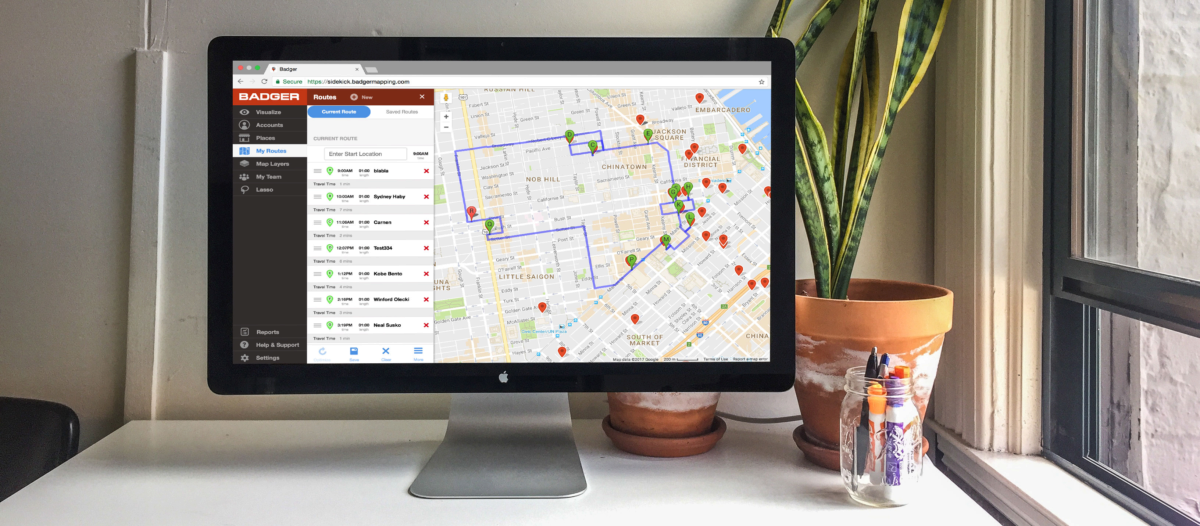News: Now offering SSO.
Learn more
News: Now offering SSO.
Learn moreWelcome to the Badger community! Thanks for joining us — we want to ensure you have the best possible experience with Badger Maps. Don’t waste any more time than necessary on tedious admin work. Maximize your time in the field with Badger, and make the most of your sales day!
Consider this your step-by-step guide to maximizing Badger's ROI. Soon you'll be ready to crush your quota with Badger.
Badger Maps is your personal sales planning and routing app. It helps outside salespeople map leads, opportunities, and customers in their territories.
Badger allows you to visualize your territory using the details in your sales data, so you can see where your time would be best spent. Use Badger to create optimized routes for all of your daily appointments, log all your meeting information and create activity reports meetings, and stay on top of your schedule.
This guide will turn you into a Badger pro, so you can start getting the most out of your time in the field.
Learn to:




Badger gives you the choice to import your accounts directly from your CRM, including Salesforce, Microsoft Dynamics, Zoho and Hubspot. This is a bidirectional sync. Anything you change in Badger will automatically update in your CRM.
Check out this page to learn more about our integration capabilities with CRMs.
There are 3 different ways to add accounts manually:

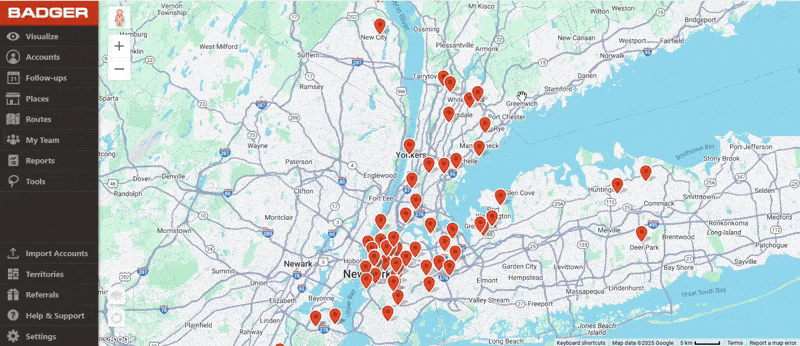
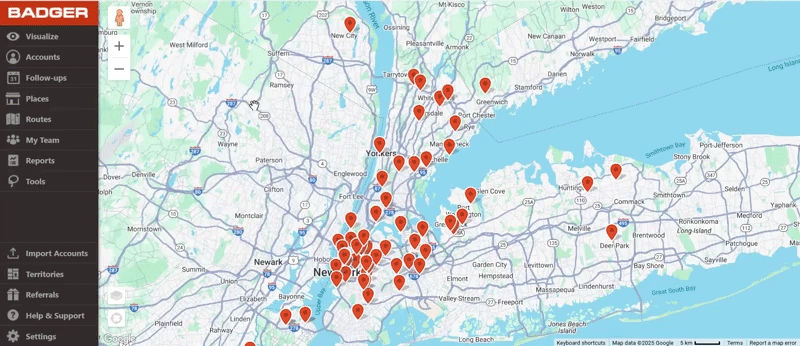
The Badger Team is here to help you! Send us your spreadsheet and within 24 hours your account will be ready to go!
Using the email associated with your Badger account, email your spreadsheet to support@badgermapping.com and one of our Data Specialists will get you all set. Let us handle your data so you can enjoy your free trial to the fullest. Read more about accounts and learn use-cases here!
The Visualize tab gives you an advanced view of your accounts within Badger. You’ll be able to Colorize & Filter your accounts based on any data field you’d like.
With the colorize feature, you can see your account pins as different colors on the map to better organize your customers. For example, you can have a field called “Priority” with values of “High”, “Medium” or “Low”. Each value will be assigned a different color on your map.
This way, if you wanted to only see High Priority leads only, you can automatically organize them on your map.
Use the Filter feature to sort your customers on the map and display the accounts how you want to see them. There are two filter types: text fields and numeric fields.
Text fields colorize your pins according to text values. Examples of text fields are Priority (with values like High, Medium, and Low) and Type of Business (with values like Clinic, Store, Car Dealership, etc.) .
Your accounts will be assigned different colors and displayed on your map.
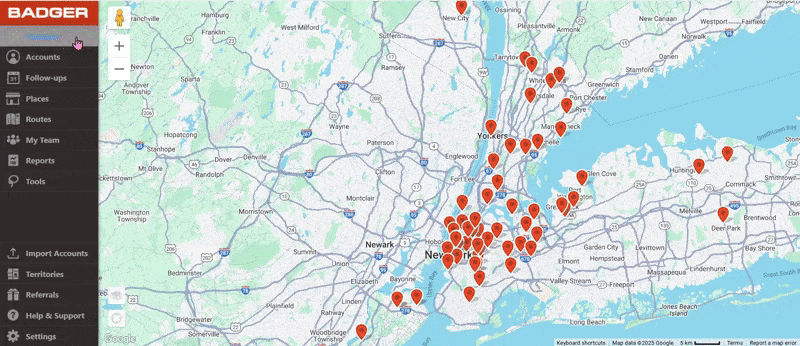
Numeric fields colorize and filter your pins according to the number attributed to a certain account field. You can only assign number values for numeric fields.
Your accounts will be colorized based on a gradient scale from yellow to dark red. (Ex: The “Days Since Last Check-In” filter will color code the accounts you saw yesterday in yellow, and the ones you haven’t seen in a month in dark red.)
In the Filter tab you can customize the scale by using the slider or typing in your own numbers. Then you’ll only see the accounts in that range on your map.
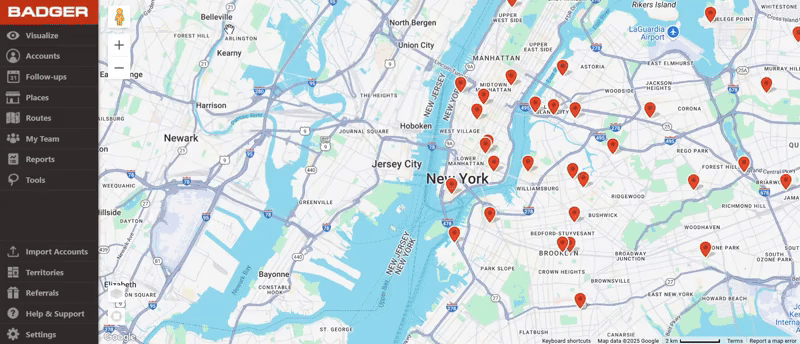
TIP: You can use text and numeric filters at the same time! Use a text and numeric filter at the same time to see where specific accounts are. For example, you can use the filters to see High Priority accounts with Sales between $10,000 -$50,000.
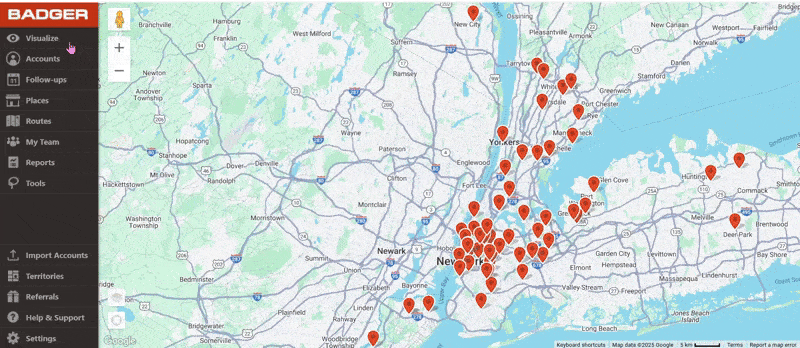

Before:

After:

TIP: Beware! If you have too many filters active your pins may not appear on the map. You can see which filters are active under “Visualize” and the grey banner, “Active Filters.” To reset your filters and see all your pins:
If your pins are still hidden, refresh your page. If the problem persists, email us at support@badgermapping.com with any questions or concerns.
In Account Details:

Using the Lasso Tool:

Tip: Lasso is great for assigning territories. If you have a team in Badger, you can use Lasso to draw a circle around a group of accounts and change/add an account owner.
The order of filters can also be customized:
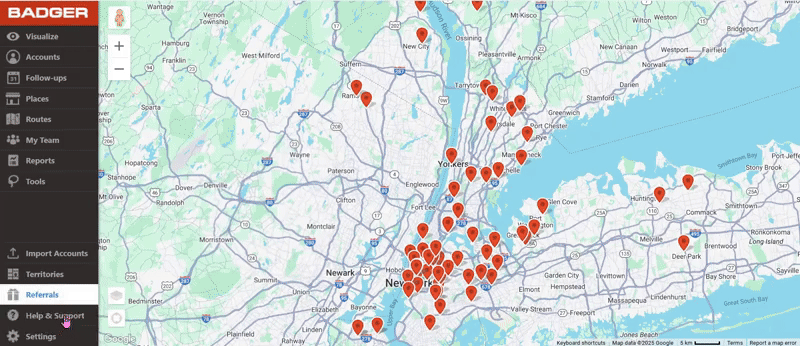
Learn more about this feature and use-cases here!
Badger saves you time by optimizing your routes with access to real-time traffic data so you can focus on sales instead of planning trips.
There are two ways of creating an optimized route — either by using the Lasso tool or adding individual addresses in a string:
Using the Lasso Tool
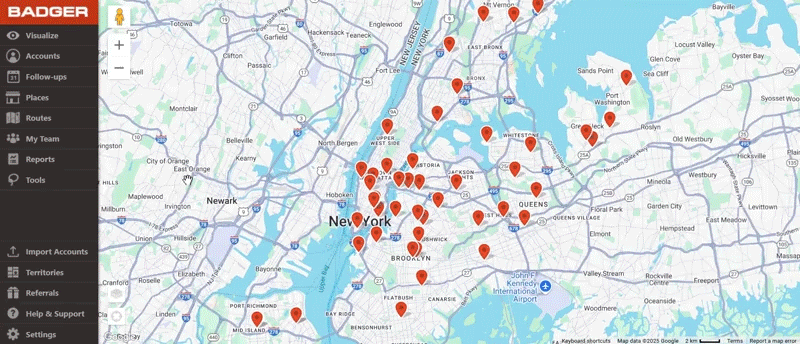
Using the Routes Tab:

Routing Individual Accounts
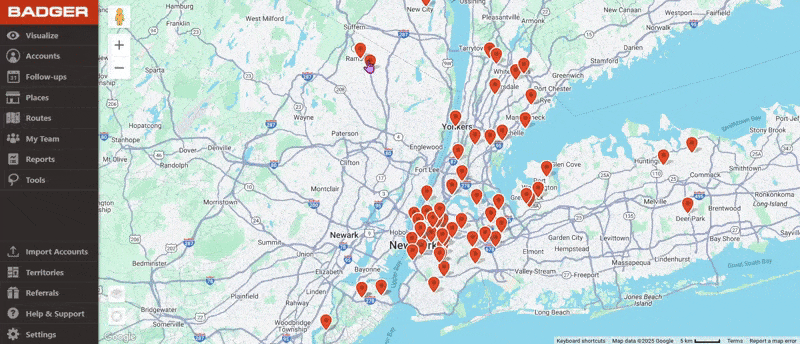
You can add start and end locations for your routes in the routes tab — your route will be optimized according to these locations. For example, you can start your route at your home address and end at your office address.
If you don’t add a start or end location, no worries. Your route will be optimized according to the accounts you added to your route.
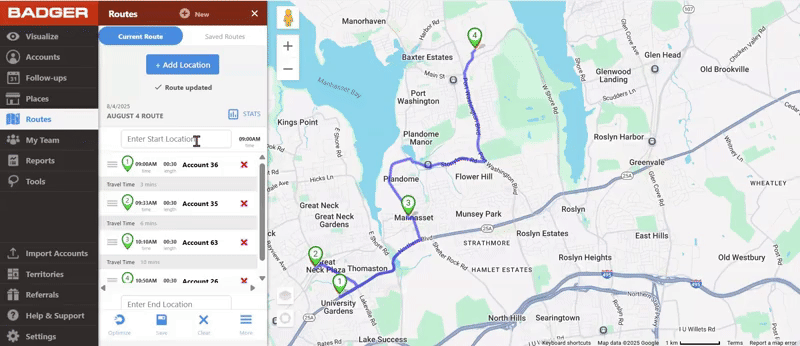
The default appointment length is 30 minutes, but you can change individual appointment lengths and your default appointment length.
Individual Appointments
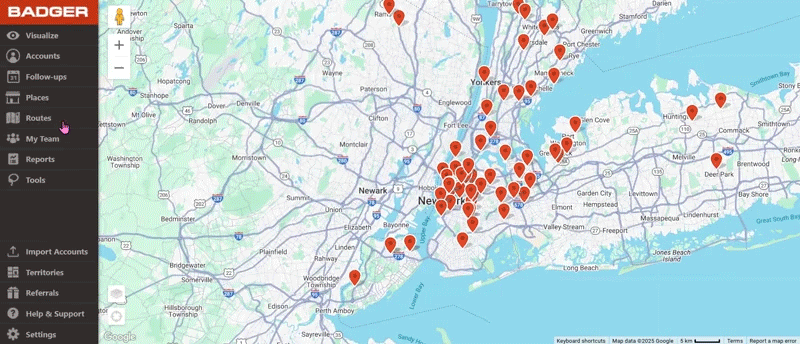
Set a Default Appointment Length
iOS

Android

Don’t have a mobile device? Send us an email at support@badgermapping.com with your desired default appointment length and we will change it for you.
Delete Appointments:

Click the “More” button on the Route tab and three different export options will appear:
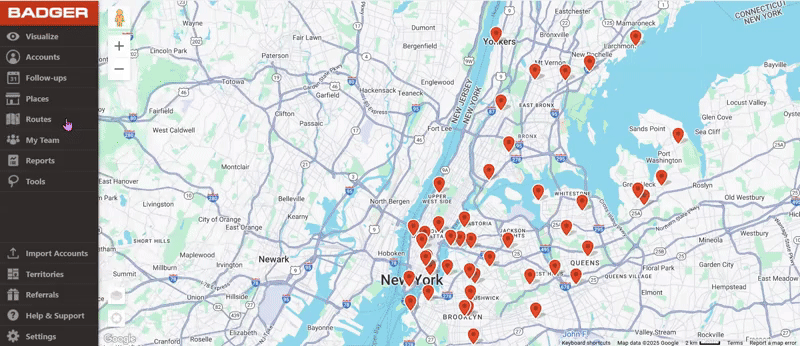
Routes Stats is a great way to know how long your route will take and how much you’ll be driving. It also breaks down your day by meeting-time versus traveling-time.
Route Stats takes into account all of the stops you make, the total distance between your meetings, the time spent at meetings, and where you want to start and end your day. Then it gives you detailed feedback on how all the changes you’ve made affected your time in the field.
Estimated mileage is also included.
In addition, next to the Stats info, you also get live feedback on any change you make to your route.
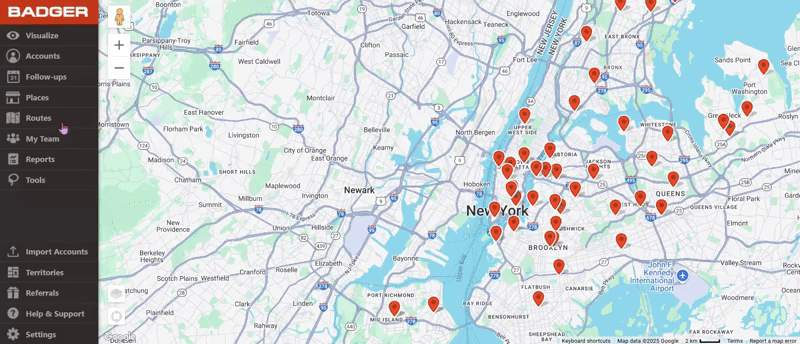
Learn more about optimized routes and use-cases here!
Prospecting is a time consuming task full of uncertainty. Use ‘Places’ to find new leads in your territory, and add them to your routes and/or accounts.
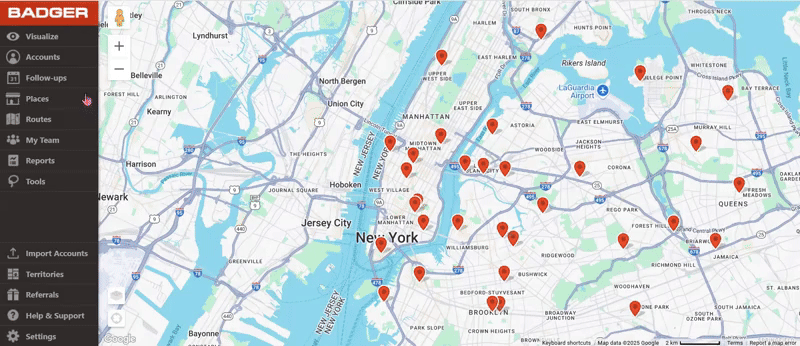
Click on one of the blue pins and then on ‘Show Details’ to view its contact information, including: name, address, phone number, website, and hours of operation.

TIP: You can set up a filter to differentiate your customers from your prospects.
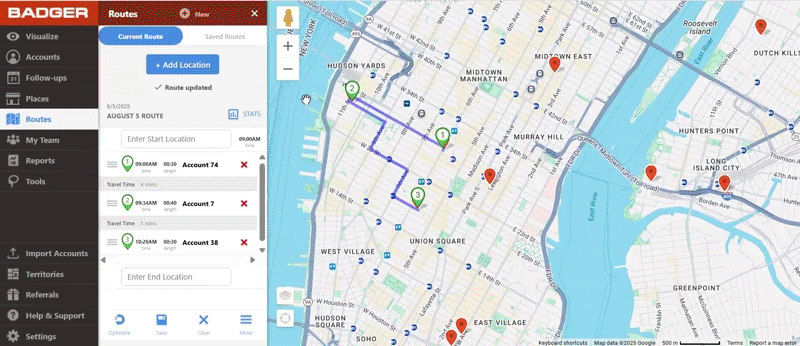
Learn more about Places and how to take full advantage of it here!
Also, check these out to learn how to use the Places tool on Android and iOS.
Check-ins are a great way to keep track of all your meeting interactions. They’re date and time-stamped logs so that you can remember what happened at every meeting and know when you last visited an account.
Check-ins come in a standard form with a meeting type field and a notes field, but can be customized for your needs.
On Web App
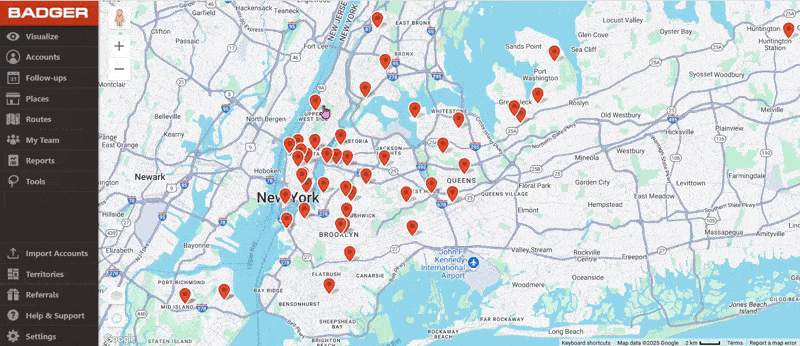
On iOS
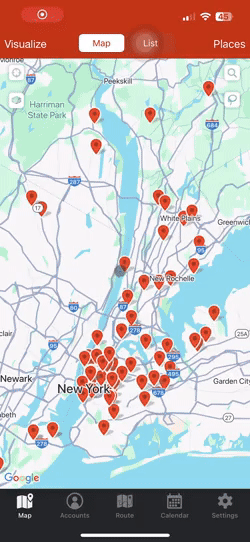
On Android
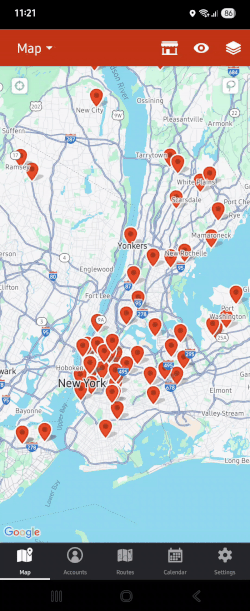
On iOS or Android
If you’re in Route Mode, you can create a check-in by tapping the “Check-in” button. Once you save your check-in, you will return to the Route Mode screen to continue with your route.
iOS
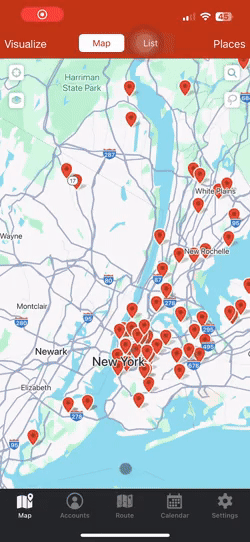
Android
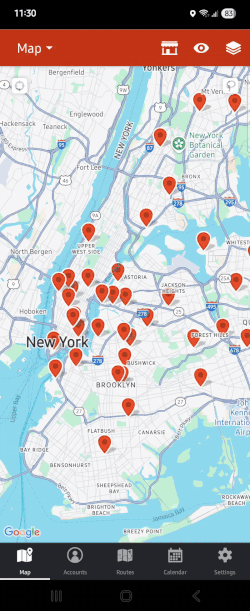
On your Computer
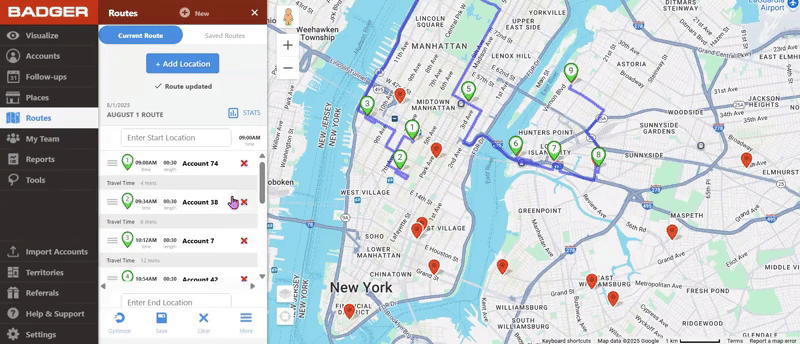

Automatic Reports: If you create check-ins during the week, you’ll be sent a check-in report to the email you associated with your Badger account every Friday at 4PM PST.
If you’re working as a team, weekly automatic reports make it easy for your organization to find the best opportunities and organize your efforts.
Log your meeting notes in a visual way by adding photos to your Check-ins:
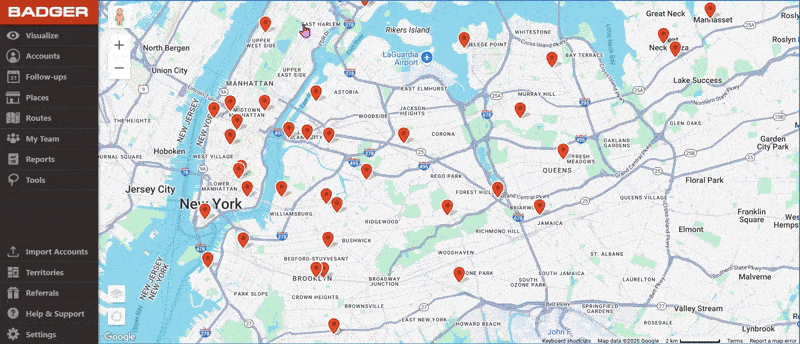
Note that you should only hit ‘Create Check-In’ after you have finished adding all the photos. After saving your Check-in, you will not be able to edit or delete the photos added.
You can also upload Check-in photos using the Android or iOS apps.
You can also visualize your data based on the days since you’ve last visited a client. Once you’ve saved a Check-in, Badger Maps automatically calculates the number of days since your last Check-in and saves it.
To colorize your data based on days since last Check-in:
Since this is a numeric filter, the left panel will show a gradient scale. The darker the pin’s color, the longer it’s been since you’ve last visited that client.
For example, if you would like to visit accounts that you haven't been to in the past month or 30 days:
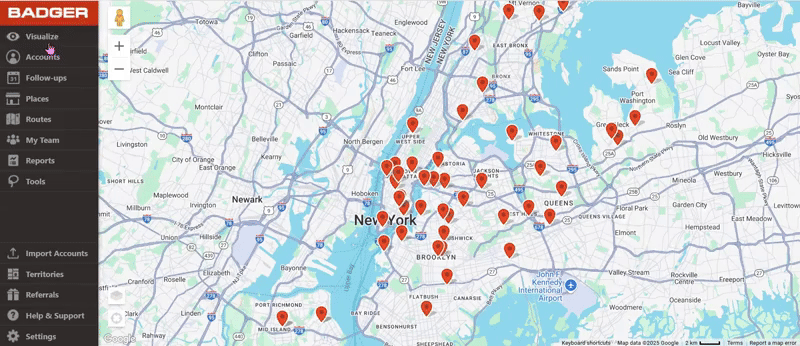
On the Computer

On iOS or Android
iOS
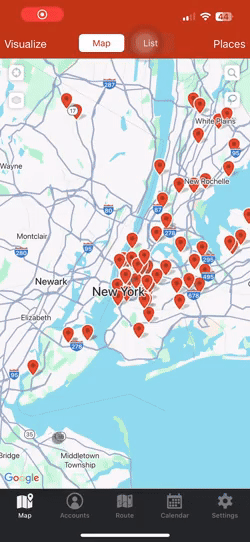
Android

Send an email to support@badgermapping.com and we’ll enable custom check-ins for you. You’ll be able to create detailed custom check-ins. Add custom fields like “delivery requests”, “time of contact”, “next step date,” and more. Create industry-specific reports and cut hours off of your administrative work.
Learn more about how to fully utilize check-ins and use-cases here!
‘Follow-ups’ is a feature designed to help keep track of your upcoming follow-ups and prioritize those accounts. It enables you to take quick action such as adding those accounts to your route and creating check-ins as soon as you follow-up with them.
Follow-ups are based on the data shown in the filter ‘Follow-Up Date’. This is a default field that can be updated with follow-up dates for each of your customers.
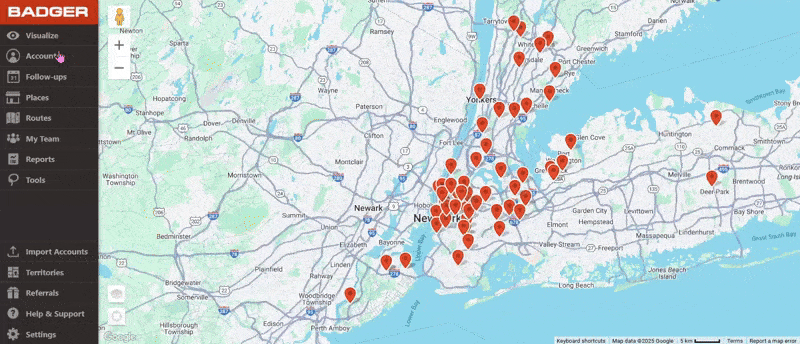
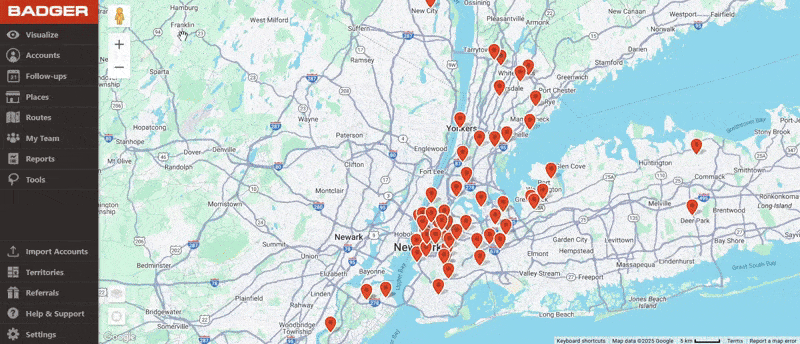
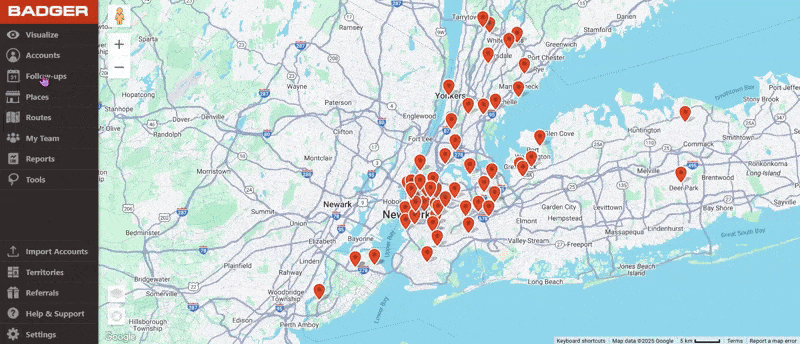
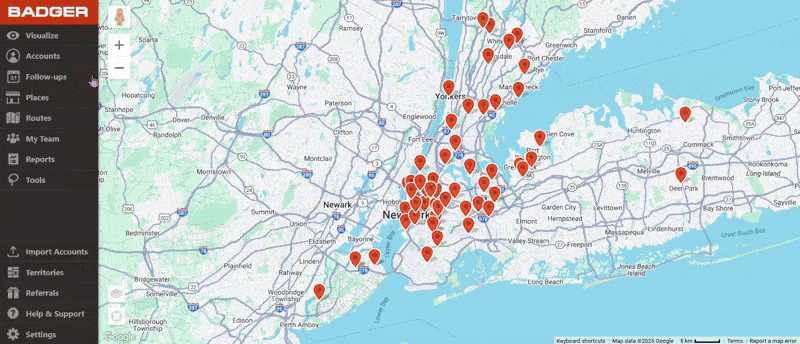
Badger Maps makes it easy to know what customers you need to see, and those that might be past due for a check-in. On the Current tab, you’ll see all your Follow-ups for the present and coming weeks, while Past Due shows all your Follow-ups that have been missed by the scheduled follow-up date.
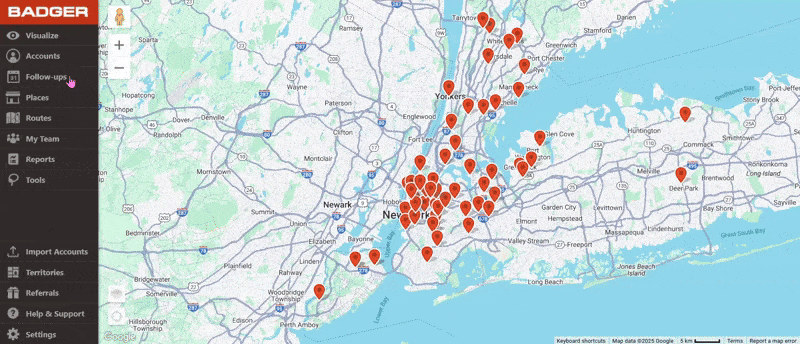
Make sure to mark your follow-ups as Done when you take action on them to avoid seeing them on the Past Due tab.
If you no longer need to follow-up on a customer, simply go to Follow-ups, click Done on the account, and you’re all set. Learn more about the ‘Follow-ups’ feature here!
Check out this article to find out how Follow-ups works on the iOS app.
A team in Badger Maps is a group of Badger Maps accounts connected together in a team hierarchy. A team in Badger Maps could be made up of managers, outside sales reps, inside sales reps, and sales support/operations.
There is no limit to the number of team members you can have in Badger Maps. The goal of creating a team in Badger is to keep your sales force organized and connected.
You can add a new team member instantly on the web app to take advantage of team features.

The new team member’s account will be instantly created and they will receive an invitation to access Badger Maps. An account specialist will reach out to you in 1-2 business days and to make sure that your team account is set up for your sales process.
Learn more about teams and best practices here!
You’re ready to use Badger like a pro. If you have any questions you can always reach us by calling 415-592-5909 or sending an email to support@badgermapping.com. Click here to schedule a free product demo with one of our experts.
Looking for our logo?
Grab a Zip packed with our logo in PNG and EPS formats.
Get Started now with a free trial of Badger Maps, no credit card required!
free trial
